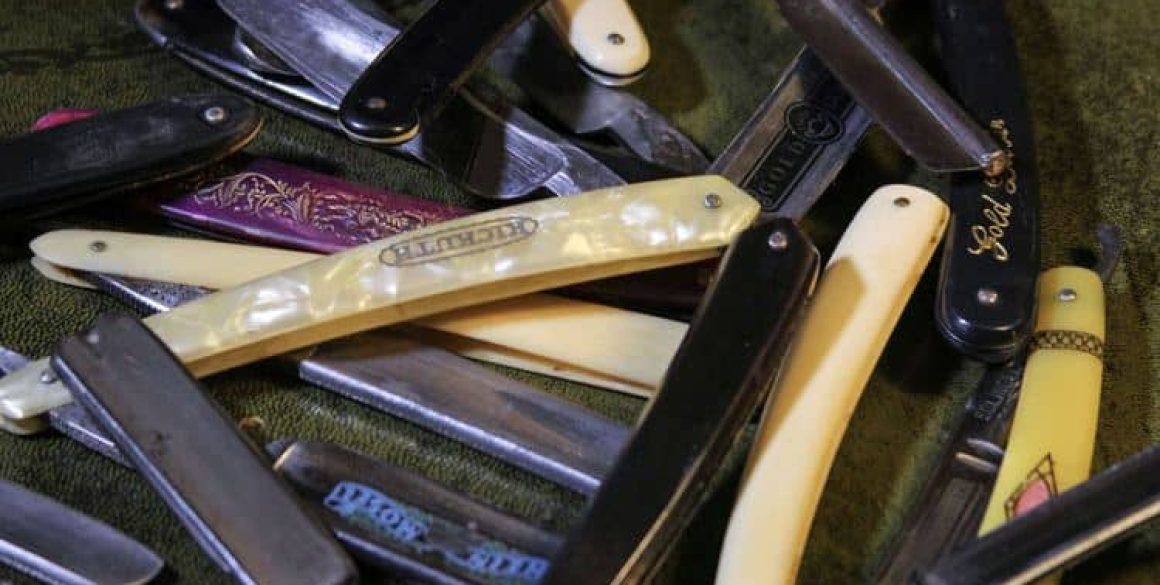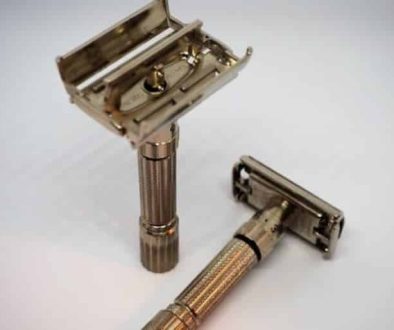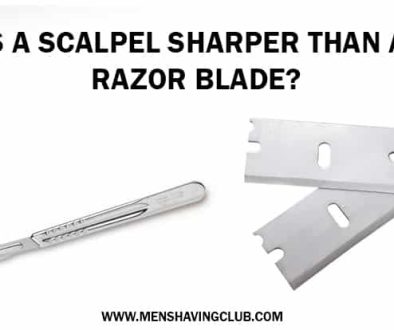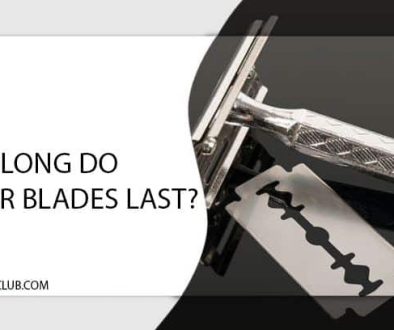How To Identify Vintage Straight Razors
Over the years, man has used various tools of different shapes and sizes to shave. But shaving tool design and effectiveness nowadays are far better compared to yester-year’s tools. One of those tools is straight razors. While it may look like a simple tool, many people don’t realize the stages of changes it has gone through to be what it is today.
Anyone who’s particularly careful about the type of straight razor they choose should first learn a brief history of this simple tool.
At least, this will hint at the changes experienced over the years before getting to the current designs.
What Does Dating A Vintage Straight Razor Mean?
Whether it’s a vintage straight razor or any other, dating any razor means estimating its approximate lifetime span.
Men have always been curious to know the age of the razors they shave with or the ones they’re looking to buy. Dating a razor also helps to understand its background history and how many more years the razor can happily serve.
Well, no one can tell you the accurate age of your vintage straight razor. But factors like the antique design, unique shape, and current condition of your traditional vintage straight razor can help you with that job.
However, any of these factors about your razor can change over time depending on the ease of use and modifications done to it.
How To Date A Straight Vintage Razor?
The best way to get an estimated date of your straight vintage razor is by coordinating it with different varieties of straight razors in the past.
Match different parts and designs of your razor with some old razors and see which resembles the most.
By doing that, you can easily find out the approximate age of your razor at home without taking help from any professional.
1500 to 1600 Straight Razors
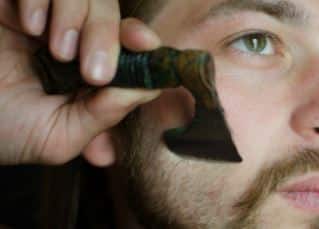 From 1500 to 1600, the razors were not inscribed with the designer’s name or branding.
From 1500 to 1600, the razors were not inscribed with the designer’s name or branding.
The earlier design was devoid of many aspects and probably was made by the local blacksmith.
It is hard to imagine how the shaving process was back then, and though they widely used them, most men preferred to grow out their beards.
The razors had a hatchet design. Of course, this type of design made them hard to use and clunky. It wasn’t until the 1800’s that the improved design started to gain popularity.
1700 to 1800 Straight Razors
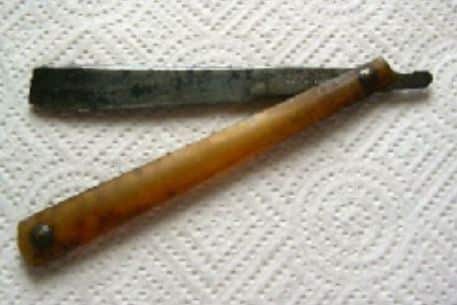 The shaving tool had slight development in this period improved upon the earlier version in that the blade and the handle were designed in a wedge shape.
The shaving tool had slight development in this period improved upon the earlier version in that the blade and the handle were designed in a wedge shape.
Around the blade area, it was broader than the pivot.
The blades’ design had no holding part known as “tang” and most of them were devoid of the monkey tail (the curved part at the end of the holder). But if the makers put a monkey tail, it was short and thick.
The types of handles used back then were designed from wood, horn, and bone, and others used ivory and tortoiseshell.
The handles were not curved; instead, they had a flat surface. And only a few handles (known as scales) were designed with a slanting shape.
Most razors handle at the pin area used iron, but sometimes the brass would do the work.
Starting 1740 to the 1830s some of the new designs back then would be inscribed with the words ‘cast steel’ or ‘warranted’ to signify the metal was used before. Robert Huntsman of Sheffield 1740 devised the metals.
1800 to 1820 Straight Razors
 The vintage straight razors that you see today have undergone a series of transformations from their original form.
The vintage straight razors that you see today have undergone a series of transformations from their original form.
The wood and steel used in these razor types are of a very anticipated type but contain durability that makes it last for almost all the shaving years of men.
In the 1800s these vintage straight razors were simply a piece of carved ‘cast steel’ that helped as a simple blade for shaving. Following the practice, many manufacturers introduced a wedge-shaped body in these razors.
A wedge can be defined as a piece of wood, ivory, or horn that has a triangular shape with a sharply inclined plane.
Very few changes happened to the improvement of the razor, though it was a bit better.
At least, the blade shoulder was a little bit raised, but they reduced the overall size.
A slight curve appeared on the scales, deviating from the earlier straight handles. Also, the handles had various decorations made from horns.
1820 to 1830 Straight Razors
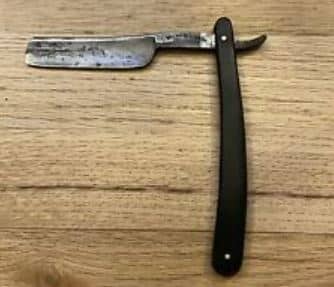 The difference in razor design happened during this period when Michael Faraday discovered ‘silver steel’.
The difference in razor design happened during this period when Michael Faraday discovered ‘silver steel’.
It wasn’t much of a difference, but it changed the steel’s appearance after adding 0.02% of silver to 99.98% of steel.
The hollow grinding started to appear in 1825, though the final stage was realized after 60 years of several transformations.
After some time, “jimps” were introduced on both sides of the tang to help with grip. During this period, razors with bladed wedges appeared far more often and had marks ‘for barbers use’ or ‘improved silver steel’; however, they used them for only 10 years.
The purpose of creating a wedge was to cover the blade and handle in a protective covering and secure them from the ends. This addition of wedge in straight razors was extremely relished and continued for 30 years. So, if you can see a wedge in your razor- it’s probably from the antique collection of straight razors between 1800 to 1830.
Around this time, English designers began inscribing monarch signatures to the razors. It consisted of the crown with monarch initials as brackets. For instance, ‘P (crown) S’ is used to represent ‘Peter Smith’. These signs on razors were used to represent the monarch’s period of reign.
1830 to 1840 Straight Razors
 The blade part and the holder improved to some degree during this period.
The blade part and the holder improved to some degree during this period.
Both etched and notched blades were devised and cast steel slowly was entirely replaced by silver steel.
As mentioned earlier that most of the straight vintage razors made during 1830-1880 had their blades constructed of cast steel. As we said, over time, manufacturers replaced the cast steel with the new silver steel that was much more efficient and sharper during shaving.
Also, the hollow ground blades were now displaced with wedge-style blades that came in an array of sizes. Such as full hollow, ¼ hollow, and ½ hollow that were modified into wedge styles.
During this period blade slogans such as ‘The Celebrated Razor’ and ‘Old English’ emerged.
Handles that were designed with horns used to have slogans inscribed on them, while the scales this time had a better-looking bow shape.
1840 to 1850 Straight Razors
 Things were getting better for the straight razor as photo etching was now a popular idea on wedge blades.
Things were getting better for the straight razor as photo etching was now a popular idea on wedge blades.
The shape, sharpness, and design of the blade of your straight vintage razor speak a lot about its age.
In the early 80s, most of the blades included in straight vintage razors had a hollow-shaped curve in them.
These are also called light hollow ground blades that particularly gained popularity in the 1870s when compared with wedge blades in the razor.
They used a method known as ‘penning’ whereby scales were patterned using silver pins.
Others could use hundreds of pins which was a complex process to create the patterns.
But common handles were designed using horns and bone. This improved razor idea continued until the 1860s.
1850 to 1870 Straight Razors
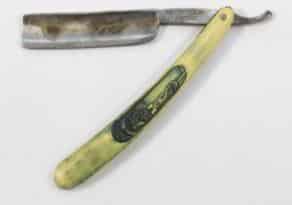 People regard this as the golden period of the wedge razor.
People regard this as the golden period of the wedge razor.
Spectacular etched blades started around this period, and producing companies would inscribe their names on the blade spine and the tang.
More materials to create handles were available such as bone, ivory, and horn decorated using silver.
Also, makers introduced the use of precious stones to make very outstanding beautiful designs.
In 1868, celluloid use in making scales was a defining moment that created a momentum of razor designs of all shapes.
During this period, the invention of ‘frameback’ razor brought signs of a more effective shaving tool.
The frame back razor came with a blade using a heavy spine and a non-removable thinnest blade that quickly gained popularity.
1870 to 1880 Straight Razors
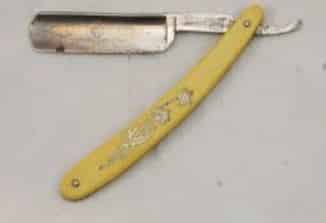 The monarch that was engraved by the manufacturer for identification purposes during 1870-1880 was now stylishly substituted with photo etching.
The monarch that was engraved by the manufacturer for identification purposes during 1870-1880 was now stylishly substituted with photo etching.
Straight shaving razors with photo-etched logo designs showed amazing artwork and gave a subtle, refining look.
As more razor designs advanced with time, this period saw the popularity of celluloid handles soar.
It was easier to come up with several designs, probably due to the versatility of the material.
It was during this period use of wedge-shaped blades began to diminish.
1880 to 1900 Straight Razors
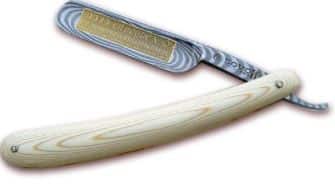 During this period machine forged blades were the common designs.
During this period machine forged blades were the common designs.
They were stamped on the blades with ‘’hand-made’ or ‘hand-forged’ similar to the style used by earlier makers.
The new design had hollow ground blades that were etched to look like the older designs of wedge blades, plus they used gold wash processes to enhance their appearance.
1900 to 1920 Straight Razors
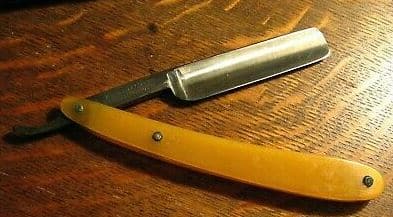
However, they became very fashionable and were included in many product lines as the status symbol of US manufacturers.
The new design was a lot fancier and more loved by men who wanted both style and functionality in their razors.
This was the overall history of vintage straight razors including almost every modification from time to time.
It’s surprising to see this essential shaving tool getting remodeled from old and traditional razors to today’s modern style straight razors. Having all or any of these features in your razor is a helpful indication to know the decade in which your straight razor originated.
With that said, here are a few more useful ways through which you can easily identify the age of your straight vintage razor.
By this time, celluloid was only used to make scales.
It is during this time plastic design known as ‘bakelite’ was introduced in the market.
The hollow ground blade design was very popular at this time, and come in 1914, a company owned by J. A. Henckels provided around sixteen diverse degrees of blade profile. They designed from full wedge designs to extreme hollow ground plus 4-blade with their end shapes in 10-blade depths going from 3/8” to 8/8”.
During this period, straight razors were very popular until knife manufacturers decided to incorporate them into their product lines.
Makers designed more sophisticated designs of straight razors; it became a desirable fine art.
This popular wave caused the majority of US manufacturers to lose out to their European counterparts as a result of more fashionable designs. Buyers preferred fancier and trending designs.
These straight razors’ designs have held their ground to date, and now more men prefer them for their daily shave.
Effective Ways To Determine Your Razor’s Age
- Generally, straight vintage razors have special and unique marks on them that tell the important details about the razor. It can be anything such as the manufacturing date, country name or manufacturer identification symbol, etc.
- By looking and researching at the materials used in your razors, you can easily get a hint of their manufacturing time and place.
- Also, the beautiful artwork carved on the razor apparently depicts the artist’s name and the time it was famously practiced in razors.
Conclusion
Straight razors have always been the trendsetter in shaving razors. From the 80’s vintage straight razor to today’s safety razors, nothing has more evolved than styles in razors. That’s why you should know where your razor has come from and how to date a straight razor.
